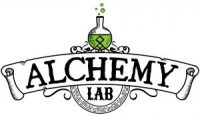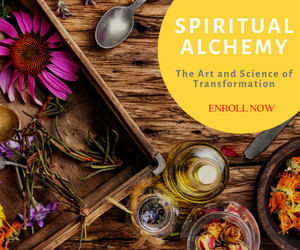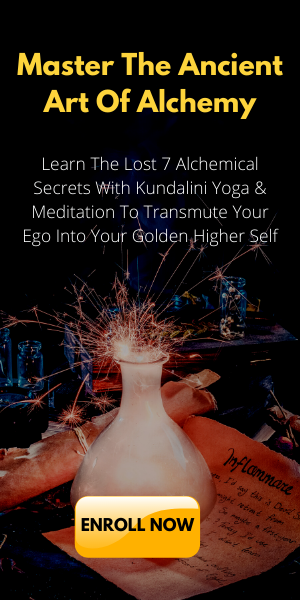Alchemy Journal Vol.6 No.2

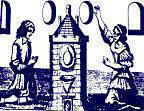
Vol.6 No.2
Summer 2005
CONTENTS
ARTICLES
The Gnostic Science of Alchemy 2
FEATURES
EDITORIAL
Alchemical Art: Blue Gold
(Note: Large images will take time to load. Hit the “Refresh” button on your browser if no images appear.)

That which is Below corresponds to that which is Above, and that which is Above corresponds to that which is Below, to accomplish the miracles of the One Thing.

Know that the union of thought and feeling is a stone you can carry anywhere, for this intelligence of the heart is everywhere just One Thing.

You are an alchemist; make gold of that.
Shortly after obtaining Alexander Roob’s book, The Hermetic Museum: Alchemy and Symbolism, and beginning my studies in alchemy, I felt the desire to create a series of broadsides that were a contemporary interpretation of ancient alchemical ideas. I wanted to combine my love of typography, alchemy, (secret) symbols, and indigo dye, in a richly textured way. I also wanted to represent the four elements, even if only in an abstract sense. Finally, I wanted the broadsides to have, as a conceptual ground, a transformative effect.
Dennis William Hauck, in The Emerald Tablet: (p. 82), writes: “By immersing oneself in water in an initiation rite or baptism, one is cleansing and dissolving old ideas and habits to regenerate new patterns. Water symbolizes the dissolving power of the liquid state as well as the property of cleansing… Because water is the primal, undifferentiated, unshaped liquid, it really stands for all the possibilities of creation…Water is symbolic of the freedom of matter to change…”
The dying of the paper in indigo, then, was my prima materia. Dying with indigo is an alchemical process for me, one that brings me “to attention.” Suddenly, after all preparations (the vat made ready, the paper cut, felts laid out) are made, all that exists is me, the vat (holding water and indigo), and the paper. I slowly lower the paper down into the vat, which looks like a black watery mass of nothingness, a primordial black hole. The paper rests a moment or two submerged in the vat. Then I carefully pull it out, tilting it and sometimes swirling it a bit in the vat, letting the indigo make its marks. As the paper is pulled out of the vat, it is a greenish color, which changes to blue as oxygen hits it. The paper is laid on a felt to dry. As soon as it is laid flat, the excess water and dye on the surface of the paper begin a movement, a dance of their own, making more patterns that will really only be apparent when the paper is completely dry. Tree-like formations, stars, veins, and lines resembling fissures take shape before my eyes. I am watching creation in motion. The paper is transforming itself. It has a mind of its own. And each piece of paper in this edition speaks a different pattern, a different message. In every moment of this process, I am acutely aware – of everything.
As with the dying process, the rest of the creation of the broadsides came together alchemically. A layer of iron oxide (hand made) was painted on the dried indigo dyed papers. Then each broadside was letterpress printed on a Vandercook printing press. (Letterpress printing employs the use of type or designs cast or engraved in relief (raised), on a variety of surfaces which can include metal, rubber, and wood.) The image that was letterpressed was created first on a computer, then made into a magnesium plate. Each image consists of a part of the human anatomy, an alchemical maxim, the text of the Emerald Tablet contained within the shape of an “O” and alchemical symbols which are used to enhance the interpretation of the maxim. Finally, gold pigment is added by hand to highlight a particular area of each broadside.
I want to note that the “O” is an integral part of the broadsides. According to Hunbatz Men, in his book, Secrets of Mayan Science/Religion, the “O” is a symbol of awakened consciousness and was used extensively in Mayan artworks. The “O” also represents the auric egg that humans reside in. Upon reflection, many other meanings of the “O” will become apparent.
As Shakespeare said, “You are an alchemist…make gold of that.” I chose to use this statement as one of the maxims because it speaks a succinct truth. We ARE all alchemists, whether we believe it or not. The implication of this is vast – and exciting. It is up to each one of us as to what we do with our inherent nature as alchemists.
References:
The Hermetic Museum: Alchemy and Symbolism – Alexander Roob (1997)
The Emerald Tablet – Dennis William Hauck (1999)
Secrets of Mayan Science/Religion – Hunbatz Men (1990)
Kattalina M. Kazunas recently completed her MFA in Interdisciplinary Arts from Columbia College in Chicago, Illinois, where she lives. More information about the Blue Gold broadsides can be found on her website: www.bluettproduktions.com/homepage.html
Gnosis, the Greek word for knowledge, implies a direct mystical experience, such as those encountered within the pagan mystery schools. Indeed, early Christianity appeared as a type of Hebrew mystery school, which, given the Hebrew reputation in the classical world for magical powers, helped fuel its expansion.
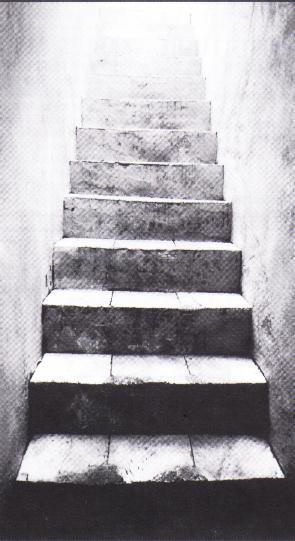
The Gnostic Science of Alchemy- Part 2
Our earliest alchemical sources show us a glimpse of an ancient science with the core of something we can recognize as alchemy as its deepest secret. Alchemy as a separate subject emerged from the intellectual and spiritual ferment of Alexandria in the first three centuries of the modern era. As it developed, it became part of the spiritual tradition of Gnostic, as opposed to orthodox and apostolic, Christianity.
Gnosis, the Greek word for knowledge, implies a direct mystical experience, such as those encountered within the pagan mystery schools. Indeed, early Christianity appeared as a type of Hebrew mystery school, which, given the Hebrew reputation in the classical world for magical powers, helped fuel its expansion. In Egypt, Christianity was accepted as another form of the Isis/Horus current which had swept through the ancient world in the centuries immediately prior to the beginning of the Common Era.
As with the Isian mysteries, early Christianity and alchemy were dominated by women. We need only read the New Testament, The Book of Acts in particular, to see how influential women were in the founding of Christianity. A key figure it seems, in both alchemy and Gnostic Christianity, was the mysterious Mary, called the Jewess.
The New Testament is filled with Mary’s, causing considerable confusion. There is Mary, Jesus’ mother, and Mary, sister of Martha and Lazarus and first witness to the resurrection, and Mary Magdalene, the whore at the well, and so on. The Gnostics avoided the confusion by focusing on Mary Magdalene as the wife and closest confidant of Jesus. According to The Gospel of Mary, one of the Nag Hammadi texts discovered in 1947, Jesus taught her secrets that He failed to reveal to his apostles. Interestingly enough, several Gnostic sects, such as the Ophites, held that Mary Magdalene and the noted first century alchemical author known as Mary the Jewess were one and the same individual.
Whoever she was, Mary the Jewess was an accomplished practical alchemist and the inventor of a series of technical devices still in use today, such as the hot ash box for steady heat, the dung box for prolonged heat and the double boiler, still called the “bain-marie” in French. None of her writings have survived, but she is quoted with the utmost respect by Zosimus and the other early compilers of alchemical texts. (Zosimus considered her to be Miriam, the sister of Moses. He was of course, as always, going for the most ancient tradition.)
Zosimus’ own sister, Theosebia, had a considerable reputation as an alchemist in her own right. But the most important of all the early female alchemists is Cleopatra, author of the classical Chrysopeia, or Gold-Making. In this work, collected with the “Isis the Prophetess” story in the 11th century Codex Marcianus, we find the earliest image of the Ouroboros serpent, biting it own tail. This masterful symbol of the cosmic cycle is half black and half white and encloses a brief Greek phrase meaning “the sum of all philosophy.” On the same manuscript page, under a serpent-like crescent moon, we find a line of eight-rayed stars. This is similar to the Gnostic Ogdoas, a grouping of the celestial forces, the ancient Egyptian neters, in an eight-fold pattern.
Reminiscent of both the Ogoad of Hermopolis, city of the god Thoth, or Tehuti, and the gnostic systems of Basilides and Valentinus, the eight-rayed star would also become the special symbol of Mary, mother of Jesus. To the Pythagoreans it symbolized the regeneration of the cosmos, being, as Eratosthenes declared, the “double polarity of the elements, producing a stability.” The seventeenth century alchemist Basil Valentine (note the combination of Basilides and Valentinus) claimed that the eight-rayed star symbolized the philosophic mercury and the completion of the first stage of the Great Work.
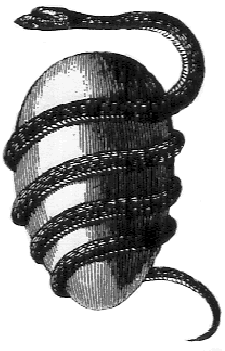 The most famous of all early alchemical texts, The Emerald Tablet of Hermes Trismegistos, became through the centuries the very credo of the alchemical adept. Tradition claimed that the tablet had been found clutched in the mummified hands of Hermes himself “in an obscure pit, where his interred body lay,” as Jabir tells us, somewhere within the great pyramid of Gizeh. The text, as Jabir gives it, is very short and obscure. It is so important, in both a historic and symbolic sense, that the full text is required for our examination. (This version was prepared by comparing the three earliest known Latin translations with the Arabic original and its subsequent English translations. The goal was to give as clear and simple a version as possible with such an obscure text.)
The most famous of all early alchemical texts, The Emerald Tablet of Hermes Trismegistos, became through the centuries the very credo of the alchemical adept. Tradition claimed that the tablet had been found clutched in the mummified hands of Hermes himself “in an obscure pit, where his interred body lay,” as Jabir tells us, somewhere within the great pyramid of Gizeh. The text, as Jabir gives it, is very short and obscure. It is so important, in both a historic and symbolic sense, that the full text is required for our examination. (This version was prepared by comparing the three earliest known Latin translations with the Arabic original and its subsequent English translations. The goal was to give as clear and simple a version as possible with such an obscure text.)
“In Truth, without falsehood and most real: that which is above is like that which is below, to generate the miracles of the one thing. And as all things have been derived from that one, by the thought of that one, so all things are born from that one thing by adoption. The sun is its father, the moon its mother. Wind has carried it in its belly and the earth is its nurse. Here is the origin point of every perfection in the world. Its strength and power are absolute when changed into earth; separate the earth from the fire, the subtle from the gross, gently and with great care. It ascends from the earth to the heavens, and descends again to the earth to receive the power of the superior and the inferior things. By this means, you will attain the glory of the world. And because of this, all darkness will flee from you. Within this is the power, the force of all forces. For it will overcome all subtle things and penetrate every solid thing. Thus was the universe created. From this will be, and will emerge, admirable adaptations. For this reason I am called Hermes Trismegistos, having three parts of the wisdom of the world. What I have said of the sun’s operation is accomplished.”
Whatever the origin of this text, (we find a version of it in the divinatory invocation to Amon-Ra given in Column XXIX, lines 5 -20 of the Leyden Papyrus, a 2nd century Greco-Egyptian magickal text buried with its anonymous owner in the noble necropolis on the west bank of Thebes) its value as an alchemical blueprint is obvious in light of our examination of the “Isis the Prophetess” fragment. In fact, ‘light” is the operative point.
In line 6 of the Amon-Ra invocation we read: “Lotus-of-the Stars, heaven, in its height and breadth, is open; I am become the pure light. . .in truth, without falsehood.” In the Arabic version of Jabir, this has become: “Because of this event, obscurity (darkness) will flee from you.” The “glory of the world” is the animated glow of the living gold, the generative radiation, the “pure light,’ seen by the alchemists as the great work was completed and gold appeared in their athanors. Once they had grasped this truth, The Emerald Tablet seems to tell us, the alchemists radiated light and the darkness fled from them, figuratively and literally.
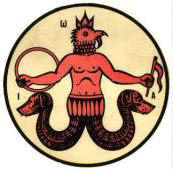 The anonymous magician of Thebes was an early 2nd century contemporary of the psuedo-Cleopatra and his wisdom papyrus provides a much needed practical counterpoint to the late classical alchemical theorists such as Olympiodorus and Stephanus of Alexandria. The 7th century Stephanus, who dedicated his Nine Lessons in Chemia to the eastern Emperor Heraclius, represents the dividing line between the classical period, that of alchemy’s emergence, and the new world of Christian orthodoxy. While Christianized Greek Hermeticism continued in the east as a spiritual indulgence for mystical and scholarly monks, the tradition in the west was ruthlessly persecuted. The Church saw it as irrevocably tainted with pagan ideals.
The anonymous magician of Thebes was an early 2nd century contemporary of the psuedo-Cleopatra and his wisdom papyrus provides a much needed practical counterpoint to the late classical alchemical theorists such as Olympiodorus and Stephanus of Alexandria. The 7th century Stephanus, who dedicated his Nine Lessons in Chemia to the eastern Emperor Heraclius, represents the dividing line between the classical period, that of alchemy’s emergence, and the new world of Christian orthodoxy. While Christianized Greek Hermeticism continued in the east as a spiritual indulgence for mystical and scholarly monks, the tradition in the west was ruthlessly persecuted. The Church saw it as irrevocably tainted with pagan ideals.
Western Christianity, and even some of the alchemists, believed that investigation into the hidden works of nature was sacrilegious. It smacked of the forbidden fruit of the Tree of Knowledge in the Garden of Eden, and was after all part of the illicit arts given to humanity by the fallen angels. Acquiring knowledge, like eating the fruit, allowed man to become more like God. If we are to believe Hermes’ Tablet, then alchemy contained the very secret of independent creation.
From this, it not hard to see how the later alchemists, from Olympiodorus in the fifth century on down, were obsessed with the symbols of the Tree of Knowledge and the serpent, its guardian and initiator. Part of this is the influence of Gnostic sects such as the Ophites, who worshipped the snake in the garden as the author of wisdom, given to man in order to free him from the domination of the demiurge Iadalboath. Over time, these symbols would become the most cherished of all in the alchemical tradition.
However, this perspective did not help them survive the onslaught of orthodoxy in the fourth and fifth centuries. In the late fourth century, The Emperor Theodosius ordered the pagan temples destroyed. The Serapeum in Alexandria and its library of ancient texts were burned. Hypatia, the last great women alchemical philosopher, was able to save some of the library and for a while studies continued. Hypatia’s murder in 415 CE put an end to all pagan learning in Egypt. The remnants of the scholars fled to Athens, where they were finally destroyed by Justinian in 529 CE.
As the darkness fell over Europe and the west, a brief Hermetic Renaissance flowered in Constantinople. Some of these compilations from the pagan Greeks would eventually make their way to France, purchased by that enigmatic late medieval King, Francis I. Centuries later, a young student of the art would find these manuscripts extremely valuable. From them, we can speculate, he found some of the same symbolic keys that we have just elucidated. However, without the conquering Arabs, most of the secret would have died in the persecutions of the fifth and sixth centuries.
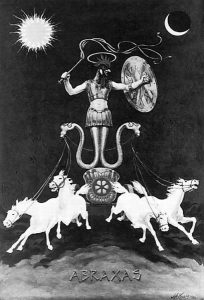 As we saw in the “Isis The Prophetess” fragment, gnostic ideas, alchemy among them, predate Christianity. The earliest version of the Emerald Tablet, buried with its anonymous owner at Thebes, is but a fragment of what is basically a “gnostic” magickal text. Alchemy represents a specific delineation of an ancient creative science, that of the triple transmutation. In its broadest sense, Gnosticism represents the world view in which these transformations can occur.
As we saw in the “Isis The Prophetess” fragment, gnostic ideas, alchemy among them, predate Christianity. The earliest version of the Emerald Tablet, buried with its anonymous owner at Thebes, is but a fragment of what is basically a “gnostic” magickal text. Alchemy represents a specific delineation of an ancient creative science, that of the triple transmutation. In its broadest sense, Gnosticism represents the world view in which these transformations can occur.
Our examination of the earliest known alchemical texts has shown us that time and timing was a key component in the alchemical process, however the texts themselves do not link that process directly to the end of the world. That link is provided, as subtext, by the gnostic framework from which the idea of alchemy emerged. At the core of Gnosticism lies a vision of the end of the world. Even before Christianity supplied it with a brand-new mythos, Gnosticism had developed its own unique eschatological flavor.
Almost every culture on the planet has some kind of catastrophe myth, usually concerning a flood. In many traditions, the disaster represents the fall of a golden age; in a few, it represents the punishment of God for mankind’s evil ways. Gnosticism’s peculiar blend of Persian Zoroastrianism, Hebrew eschatology and Egyptian cosmology with Greek philosophical methods is an attempt to synthesize all the ancient catastrophic perspectives into an apocalyptic unity.
While keeping in mind that the label “Gnosticism” covers an enormous number of different and often contradictory belief systems, it is possible to sort through its spiritual kaleidoscope and arrive at an overview of a basic gnostic cosmology. Gnosticism’s main tenets contain both good and evil gods, sometimes inverting the usual perceptions, and a sophisticated version of the End of the World.
At the creation of the world, the spirit of Light was imprisoned by the powers of Darkness, trapped in human bodies as separate sparks of light. The gnostic sects held that the goal of their knowledge was the path of return, the ability of the individual sparks to return to the Light through a process of redemption. This world and its history are the work of the evil demiurge, sometimes called Iadalbaoth, designed to hold mankind back from its transcendent destiny.
As each soul is redeemed, it travels back to the shattered source of the divine Light. The soul returns its own small spark of light to the source, which slowly, as more and more souls return to it, becomes whole again. Eventually, when all souls have returned, the physical universe, being now completely without Light, will end. This “eschatology of Light,” synthesized from Egyptian, Persian and Hebrew elements, can be seen as the framework supporting the vast diversity of gnostic traditions, including the new messianic form of Judaism that would become Christianity a century or so later.
Indeed, the gnostic sects quite naturally believed that they possessed the true meaning of Christ’s teachings. Most of them did not believe in a literal Jesus, born of flesh and blood who suffered and died. To the Gnostics, Jesus was a divine messenger, an angelic being disguised as a man, sent to reveal the secret knowledge of the path of return, the way out of this world of Darkness. In this view, Christ’s return will not be physical, but spiritual. The resurrection becomes a metaphor for the experience of a spiritual triumph over death, and therefore available to everyone.
The gnostic insistence on a direct experience of salvation, a personal return to the Light, contrasted sharply with the emerging orthodox position that held that only the apostles, who witnessed the resurrection, could hold and attribute spiritual authority. The Gnostics raised the ante, so to speak, by adopting Mary Magdalene, in their view Jesus’s wife and the sister of Martha and Lazarus and therefore the first witness to the resurrection, as a key gnostic theorist. As we noted above, some of the gnostic sects held that Mary the 1st century Hebrew alchemist was in reality Mary Magdalene. For many more gnostic sects, Mary, mother, wife and sister of the god/man, was simply Isis, the Queen of Heaven.
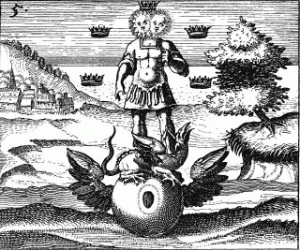 It seems strange at first to think of Mary Magdalene as one of the founders of alchemy, Mary the Jewess. Orthodox Christianity became the only Christianity, obscuring much of the truth about the 1st century’s incredible intellectual and spiritual renaissance. Behind that efflorescence, however, lay the gnostic world view with its eschatology of Light offering a hope of return to the divine source. It would not be too far from the truth to say that orthodox Christianity was a political development designed to control access to that spiritual reality.
It seems strange at first to think of Mary Magdalene as one of the founders of alchemy, Mary the Jewess. Orthodox Christianity became the only Christianity, obscuring much of the truth about the 1st century’s incredible intellectual and spiritual renaissance. Behind that efflorescence, however, lay the gnostic world view with its eschatology of Light offering a hope of return to the divine source. It would not be too far from the truth to say that orthodox Christianity was a political development designed to control access to that spiritual reality.
And yet, the more one studies the Gospels and the early gnostic alchemical literature, the harder it is to deny that Christianity is an expression of the same spiritual tradition. Only in the Gospels, and other early Christian texts, are the transformational process and eschatology portrayed as part of the same seamless whole. If we can see Jesus in his original context as a magician, then it isn’t much of a stretch to see his wife as an alchemist.
At the core of Christianity is a mystery. The Gnostic Christians embraced the mystery, while the Imperial Orthodoxy sought to minimize, control and literalize it. But the mystery persisted and not even the church councils of the fourth century could completely banish or obscure it.
Our modern view of the end of the world is entangled with the magickal mystery at the heart of Christianity. To understand this mystery and its alchemical and apocalyptic importance, we must first look at how the Hebrew culture of Palestine in the first century came to develop its unique perspective on the end of all things.
The existence of The Old Testament is not, by itself, remarkable. Many other ancient sources are just as obsessed with the end of the world. Flood narratives, such as that of Noah in Genesis, are common to almost every traditional culture on the planet. The Noah story originally comes from a Mesopotamian tale woven into the Epic of Gilgamesh. But the Old Testament is unique. Instead of treating its story as a chronicle or a collection of myths, The Old Testament was put together as a way to demonstrate the supernatural intervention of God in the course of human affairs.
The early books of the Old Testament display a kind of historical unity, as if they were intended to make sense together, even if they were written at different times and under different circumstances. Thus the passage of time is given meaning by its fulfillment of God’s purpose. This sense of historical spirituality made the Hebrew world view, and the Christian which grew from it, highly susceptible to the idea of an end to all things.
However, this sense of unity was itself the product of an apocalyptic event, the fall of Jerusalem to the Babylonians in 587 BCE and the subsequent return of the exiles a generation later. The Book of the Law of Moses, which Ezra read to the assembled Israelites at the dedication of the re-built Temple in 445 BCE, was a combination of ancient texts found in the ruins of the Temple and Mesopotamian myths absorbed during the exile. This new version emphasized the power of the Hebrew’s God to punish or reward His people. The historical nature of God’s effect was not lost on the survivors of the exile who heard this version of the Book of the Law.
In addition to a new sense of God’s involvement with the workings of history, the exile added another element to the emerging religion of Judaism. Where before the exile, the Hebrew prophets had been mainly concerned with the social issues of Israel and its relationship to God’s plan for it, after the return the focus shifted to an even greater apocalypse, one of cosmic proportions.
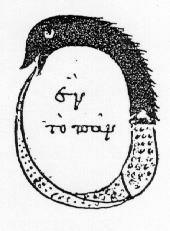 The Old Testament prophets, from the Greek word for ecstatic utterance, appeared around 1000 BCE as a type of monotheistic shaman. The “nevi’im,” or God-speakers, were considered, along with the priests and the sages, to be crucial for the spiritual health of the Hebrew people. There were great numbers of these prophets who performed frenzied rituals of dancing and chanting for large and enthusiastic crowds, which, not unlike the rituals that accompanied the State Oracle of Tibet, ended with a prophetic announcement. Taking their cue from Adam and Eve’s banishment from the Garden and the Flood, the prophets soon began to focus on the sinful nature of Israel and God’s approaching Day of Wrath.
The Old Testament prophets, from the Greek word for ecstatic utterance, appeared around 1000 BCE as a type of monotheistic shaman. The “nevi’im,” or God-speakers, were considered, along with the priests and the sages, to be crucial for the spiritual health of the Hebrew people. There were great numbers of these prophets who performed frenzied rituals of dancing and chanting for large and enthusiastic crowds, which, not unlike the rituals that accompanied the State Oracle of Tibet, ended with a prophetic announcement. Taking their cue from Adam and Eve’s banishment from the Garden and the Flood, the prophets soon began to focus on the sinful nature of Israel and God’s approaching Day of Wrath.
Amos started the trend around 760 BCE, which continued in increasing urgency until the prophecies came true. Jeremiah, the prophet of the Babylonian conquest, was the first to connect the fate of Israel with the ultimate destiny of the cosmos. He predicted that “the heavens will shudder” with pure horror at God’s punishment. For those who experienced the Babylonian conquest, it certainly felt like the end of the world. What had been the essentials of God’s favor, a homeland, a temple and the right of Kingship, had all been taken away and destroyed.
Ezekiel, who was a priest of the temple at the time of the conquest, marks the beginning of the new apocalyptic prophets. Like Jeremiah, he predicted the end of the Israelite nation and the destruction of the temple. Ezekiel however used an amazing variety of symbols — fiery wheels, dry bones, chariots and multi-headed angels of marvelous countenance — to create a surreal image of transformative and apocalyptic processes. He brings together almost all of the elements used by future prophets to describe the End of the World, and adds a few new ones: a king from the house of David who will rule all mankind, the idea of a purified elect who will survive and, most important of all, the re-building of the great Temple at Jerusalem as God intended it to be. This image of a physical New Jerusalem laid the foundations for the Temple imagery in the Book of Revelation and contributed to the gnostic idea of chilaism.
But it was the Second Isaiah, a contemporary in exile of Ezekiel’s, who created the image of the apocalyptic messiah. The messiah will come, as Ezekiel said, from the House of David and be scourged and rejected. His message will be taken up more by the Gentiles than Jews, but in the end the Jews will be proclaimed as God’s chosen ones. A new covenant will be declared and a new heaven and a new earth will be created. The wasteland will be fertile once again, and the sun will never set.
It was this image of the messiah that informed the thinking and actions of Jesus. He seems to have designed his teaching experiences to meet the expectations of 2nd Isaiah’s prophecies. And those around him, who thought he was the messiah, knew and understood these apocalyptic connotations.
The common beliefs about the end of the world at the time Jesus began his teachings included several key components. The first sign of the End would the rebellion of Israel, God’s people, against the evil forces of Gog, the evil king of Darkness, identified by all as the Roman Empire. In the hundred years or so prior to Jesus’ birth, several such rebellions had taken place. One, led Judah Maccabee, had almost succeeded. However, every attempt at revolt served only to tighten Rome’s grip.
Following the rebellion would come the Day of the Lord, the Last Judgment, the manifestation of God’s Wrath on the wicked. Then, the nation of Israel would be re-united and all the exiles would return. The dead would be resurrected so that they could experience the final stage, the reign of the Messiah in the new earthly paradise. With, of course, the divinely re-built Temple at the center.
In this context, the role of the Messiah was simple. Defeat the evil King of the World and usher in the golden age. It is difficult to know how Jesus saw himself against these expectations. No one recorded Jesus’ teachings during his lifetime. For 35 years after his death, his ideas lived on only in the spoken words of missionaries and teachers. Jesus’ teachings adapted themselves spontaneously to the expectation of their listeners.
To his contemporaries, Jesus appeared to be a miracle working magi of a sort all too common in troubled Palestine. He is seen by outsiders as similar to other great magicians such Apollonius of Tyana, who also had several Gospel-like Lives written about him. Galilee, Jesus’ homeland, was only recently, a hundred years or so, converted to Judaism and still retained a strong flavor of native paganism. In this background, Jesus’ primary significance derived from his ability to work miracles.
The magi, such as we are told in the Gospel of Matthew followed a Star to Jesus’ birth, were prophet-like figures with distinct ethical and eschatological teachings. Jesus was a similar figure who taught of the Kingdom of Heaven, attracted followers and performed feats of magick. The difference was the specific emphasis on Jewish messianic concepts. Jesus declared himself as the “Son of Man,” 2nd Isaiah’s title for the suffering and triumphant savior.
But the mystery at the core of his teaching was the nature and timing of the arrival of the Kingdom of Heaven. There can be no doubt that Jesus left his early followers with the impression that the world would soon end. His death and resurrection symbolized the triumph of the righteous over the evil King of the World, and His return would herald the beginning of the next phase, the Day of Judgment. He even declared that some living at that moment would still be alive when he returned.
If the end was expected at any moment, then there was no need to record Jesus’ teachings. After many years, when the return still had not happened, the older members of the community began to record their memories. The Gospels came from these early sources. Mark’s Gospel, written around 70 CE, used a common teaching document, known as Q, as the source around which the author wove the story of Jesus’ life. Matthew, the next Gospel to be written down, between 80 and 100 CE, used a similar technique and sources, but applied to them a much greater level of understanding.
 Matthew gives us the most complete glimpse of Jesus’ teachings on the End of the World and the coming Kingdom of Heaven. It was written by someone who had grasped the mystery at the core of Christianity. From Matthew we hear of Jesus’ Egyptian connections, the Star of Bethlehem and the journey of the Wise Men from the east, the Massacre of the Innocents, the temptation of the Messiah, and many other stories with deep esoteric significance.
Matthew gives us the most complete glimpse of Jesus’ teachings on the End of the World and the coming Kingdom of Heaven. It was written by someone who had grasped the mystery at the core of Christianity. From Matthew we hear of Jesus’ Egyptian connections, the Star of Bethlehem and the journey of the Wise Men from the east, the Massacre of the Innocents, the temptation of the Messiah, and many other stories with deep esoteric significance.
The mystery is openly proclaimed in Matthew at the beginning of Jesus’ career. Matthew quotes the 2nd Isaiah: “the people living in darkness have seen a great light, on those living in the land of the shadow of death a light has dawned.” To fulfill this prophecy, Matthew tells us, Jesus began to preach; “Repent, for the kingdom of heaven is near.”
To see this a little more clearly, we need to step outside Christianity for a moment and look at another Egyptian magical text, this one from the Paris Papyrus, one of the gems discovered in Egypt by Napoleon’s savants. In papyrus IV, lines 475-830, we find a ritual to attain immortality through inhaling Light. The aspirants is first told to perform seven days of rituals, and then three days of dark retreat. On the morning of the eleventh day, the aspirant is to face the rising sun and perform an invocation: ” First source of all sources. . .perfect my body. . .(so) that I may participate again in the immortal beginning. . .that I may be reborn in thought. . .and that the holy spirit may breathe in me.”
With this the aspirant inhales the first rays of the rising sun, and then leaves his body behind and rises into the heavens, filled with Light. “For I am the Son (of the Sun), I surpass the limits of my souls, I am (magical symbol for Light).”
In Matthew 5:14, Jesus declares: “You are the light of the world.” This also echoes the Emerald Tablet in equating successful transformation with the spontaneous emission of light or illumination. The Lord’s Prayer, which appears in Matthew 6: 9-13, also suggests the Emerald Tablet. When the Kingdom of Heaven is achieved, Jesus suggests, then heaven and earth, above and below, will be the same. Chapters 24 and 25 provide a blueprint to the coming apocalypse, telling us: “The sun will be darkened, and the moon will not give its light, the stars will fall from the sky.” He also tells us that it will be “like in the days of Noah” before the return of the Son of Man, except that no one will know the exact day or hour. No one that is except the initiated.
Matthew 24: verse 43 and 44 suggests that those who follow the Son of Man will indeed be able to calculate the time, and so be waiting in preparation. When he returns, chapter 25: verse 31 tells us, he will separate the sheep from the goats, the subtle from the gross, on the basis of their compassion for their fellow men.
In Matthew, we also find the account of Mary Magdalene’s witness to the resurrection, complete with its own light metaphor. “His appearance was like lightning,” we are told, and Mary does not at first recognize him. Matthew’s account of the resurrection ends with Christ’s ascension in Galilee and his pronouncement of the Great Commission. The last line of which goes to the heart of the mystery: “And surely I am with you always, even to the end of the world.”
At the core of Christianity we find an alchemical transformation and the knowledge of the end of time. The Gnostics understood and embraced this view of Christianity. For a brief, shining moment, it seemed as if the knowledge of the path of return was about to triumph over the evil demiurge and his prison of matter. The hope it offered remains the promise at the heart of Jesus’ teachings. As the Gnostics thought, the Messiah opened the way.
And just as quickly, the demiurge closed it again.
Vincent Bridges.is the co-author of The Mysteries of the Great Cross at Hendaye: Alchemy and the End of Time, Destiny Books, 2003. M Vincent Bridges is the co-author of The Mysteries of the Great Cross at Hendaye: Alchemy and the End of Time, Destiny Books, 2003. The above is a second excerpt taken from The Gnostic Science of Alchemy by Vincent Bridges ©1999. The full article can be seen on his web site at:http://vincentbridges.com, along with other of his work including “The True History of the Holy Grail and High Weirdness,” a collection of articles by Vincent Bridges and his Mysteries co-author, Jay Weidner. He was featured in “The Learning Channel’s” documentary Atlantis in the Andes (June 2001) and was historical consultant and on-camera tour guide for the History Channel’s groundbreaking biography Nostradamus: 500 Years Later. Vincent Bridges currently lives in the Uwharrie Mountains of North Carolina, with his wife, the artist Darlene, and their four cats.
Western Christianity, and even some of the alchemists, believed that investigation into the hidden works of nature was sacrilegious. It smacked of the forbidden fruit of the Tree of Knowledge in the Garden of Eden, and was after all part of the illicit arts given to humanity by the fallen angels. Acquiring knowledge, like eating the fruit, allowed man to become more like God. If we are to believe Hermes’ Tablet, then alchemy contained the very secret of independent creation.
At the core of Christianity is a mystery. The Gnostic Christians embraced the mystery, while the Imperial Orthodoxy sought to minimize, control and literalize it. But the mystery persisted and not even the church councils of the fourth century could completely banish or obscure it.
The Old Testament prophets, from the Greek word for ecstatic utterance, appeared around 1000 BCE as a type of monotheistic shaman. The “nevi’im,” or God-speakers, were considered, along with the priests and the sages, to be crucial for the spiritual health of the Hebrew people.
The Great Alchemical Work of
Eiranaeus Philalethes, Basil Valentine, and Nicholas Flamel
We know that there will be those who don’t agree with us but, to these, we invite you to prove your opposition with valid arguments. Given this, let us see, then, what Philalethes says regarding the first phase of his work in The Marrow of the Alchemy and in An Open Entrance to the Closed Palace of King.
“The Substance which we first take in hand is a Mineral similar to Mercury, which a crude Sulphur doth bake in the Earth; it is called Saturn’s Child, which indeed appeareth vile to sight, but is glorious within; It is sable colored, with Argent Veines appearing intermixed in the body, whose sparkling line stains the connate Sulphur; It is wholly volatile and unfixed, yet taken in its native crudity, it purgeth all superfluity of Sol; it is of a venomous nature, and abused by many in a medicinal way; If its Elements by Art be loosed, the inside appears very resplendent, which then floweth in the Fire like a metal, although there is nothing of a Metalline king more brittle.”
Philalethes describes with great exactitude and detail our mineral subject’s main characteristics, with a view to its identification for the children of the Art. Flamel is less generous and, until the Separation, veils completely the subject’s name and its metallic acolyte. Philalethes begins by saying that the mineral subject of his work is Saturn’s son. As it is known, astrologically, Saturn is a dark and cold planet, and its metallic correspondence is lead, whose mineral, a black metallic color, is the galena.
Our mineral, being Saturn’s son, has very similar characteristics to its mineral progenitor. It is sable colored (sable, in heraldry, corresponds to black) with silver veins and its shine is stained by an innate Sulphur. It is volatile, poisonous, it purges the Sun’s superfluities and, at that time in history, it was used and abused by many doctors and chemists in the practice of the medicine. He says, still, that its inner is bright, that it flows in fire, and as a metal that in its solid state is very brittle.
Well then, what can we deduce from that which we have said about the mineral subject? That it is a black mineral, brilliant in colour, whose shine is stained by innate chemical Sulphur. For now, we can conclude that these characteristics correspond, exactly, to one sulfide mineral ore. That it purges the Sun (gold) of its superfluity. Anciently, to purge (to purify) gold, besides the quartation process, (cementing and amalgam with common quicksilver), our artists melted impure gold with our mineral, which, after volatilization with a strong fire, (our mineral is volatile) left the gold in the crucible bottom exempt of impurities.
In effect, and with great incidence in the 17th to 19th centuries, there were many cases of poisoning form the indiscriminate abuse of this mineral as a medicine, mainly as a purgative, not only the raw mineral, but also its regulus, being prescribed. It flows in the fire as a metal, is very brittle in its solid state and can easily be powdered in a metal mortar. Indeed this mineral is described well. We shall include a little extra fact, that the planetary symbol of this mineral is the same as that used for the Earth, that is to say a cruciferous globe.
We cannot add anything else, because everything has already been said. There is not a word or a superfluous point that is lacking, as Philalethes affirms in his book. It is almost impossible, for those who have some mineralogical and metallurgical knowledge, not to know what mineral is here described.
This mineral subject has been formerly found in abundance in our country (the author is referring to his country of residence, Portugal). At present, some mines from which it was extracted are no longer in activity or are obstructed; therefore, it is no longer easy to find it here.
Saying this, we can continue looking at the description of the first part of the First Work, because the mineral subject doesn’t have all the necessary elements to complete the process.
“But it containeth in itself so Sulphur, save only it is congealed by a burning Sulphur, being brittle, and black with shining Veins.”
“They sought active Sulphur in a pure state, and found it cunningly concealed in the House of Ram.”
“It seemed strange indeed, that a metal so stout and fixed as to withstand the thundering blast of Vulcan, which will not relent in any heat, nor mix in flux with any metal, yet by our Art it will in this piercing Mineral Liquor be retrograde.”
“Moreover Aries is known to be House of stout Mars, in which all Artists charge the beginning of thy Work, and what can be said more plainly? Surely there can be none so ignorant as not to believe that a hidden meaning is concealed in these Words, which hitherto was never better explained.”
Before we continue we will have to explain what the Master wants to say in the use of the term Sulphur(alchemical). The basis of hermetic theory is matter’s unity. It is a unity but it can take several forms and, in these new forms, combine and produce new bodies. Matter is composed of two principles: Sulphur and Mercury that can be combined in different proportions to form new bodies.
Basil Valentine adds a third principle: Salt. The terms Sulphur, Mercury and Salt don’t refer to the chemical bodies that are known commonly by these names, but instead describe certain qualities of matter. The Sulphur, in a metal, refers to its color and to its degree of combustibility; Mercury, to its shine, volatility, fusibility and malleability; Salt, to the product of a union between Sulphur and the Mercury, according to some people, and its hardness, according to others.
Given these explanations, indispensable for the understanding of the text, we can continue. Philalethes says that the mineral subject doesn’t contain any Sulphur but that only chemical Sulphur coagulates it. As we saw, this is true, for it is a sulphide mineral ore. He tells us still, to seek that Sulphur we require in the house of Aries or Mars, which both mean the same thing, in a metal whose zodiacal correspondence is that of Aries or the Ram and, the planetary, of Mars. It is impossible to be clearer, because it isn’t difficult to know which is the metal corresponding to the Martian planet, whose spagyric symbol is the same that universally designates the masculine sex.
The Master adds, and with much pertinence, that it is strange to see a metal so stout (not volatile) be retrograded (to return to the sulphide state) through the Art, by the penetrating power of our mineral. Philalethes, as great a Master that he was in our Art, for his time, showed to have a great metallurgical and spagyrical knowledge, which causes us to think that he must have been a great and learned man.
At present, we know that this metal (Mars) once melted with our subject, takes possession of its Sulphur, reducing the mineral sulphide to a metal (Regulus), it being then combined with the chemical Sulphur in the sulphide form (Caput), which is one the original ways that the ore of metallic Mars was usually extracted.
Of this therefore, the Master tells us, that this penetrating mineral has the power to retrograde Mars, that is, to transform it again (artificially) into a sulphide of Mars.
In the following, Philalethes tells us those proportions that it is necessary to respect in order to proceed to the Separation, that is, toward the obtaining of a martial Regulus, and of the respective Caput.
“Let me tell you how this part of work is performed. Take 4 parts of our fiery Dragon, in whose belly is hidden the magic Chalybs, and 9 parts of our Magnet; mingle them by means of a fierce fire, in the form of a mineral water, the foam of which must be taken away. Remove the shell, and take the kernel. Purge what remains once more by means of fire and the Sun, which may be done easily if Saturn shall have seen himself in the mirror of Mars. Then you will obtain our Chameleon, or Chaos, in which all the virtues of our Art are potentially present.”
“First then cause Mars for to embrace this Mineral, so shall both cast away their Earthiness, and in short space the Metalline Substance shall shine like unto the Heavens and for a Sign of thy success, thou shalt surely find a Seal of a Stellate kind imprinted thereon.”
“The Dregs being removed, there appears a Nut in fashion like to a Metal (which may be powdered to dust) wherein is shut up a tender Soul, which in a small Fire ariseth as Smoak, like Argent-vive, slightly congeled, which the Fire doth evaporate.”
“This Substance is of a Stellate nature, and wholly Spiritual, being totally inclined to fly from the Fire; the reason is because the Soul of each is a Magnet to each other, and this we call the Urine of old Saturn This is our Steel, our true Hermaphrodite, our Moon, so named for its brightness.”
“When you see its constellation, follow it to the cradle, and there you will behold a beautiful Infant. Remove the impurities, look upon the face of the King’s Son; open your treasure, give to him gold, and after his death he will bestow on you his flesh and blood, the highest Medicine in the three monarchies of the earth.”
The Master could not elucidate further. First, he gives us the proportions: four parts of the igneous dragon for nine parts of our magnet. But, pay attention, there is an ambush here. He says:
“…Take four parts of the igneous dragon that hides in its womb the magic steel (Sulphur) and nine parts of our Magnet…”
We know that the mineral subject, (our black Dragon) is lacking actual alchemical Sulphur. Therefore, the carrier of Sulphur will be, as he affirms, Mars, so much more that in advance he says: ‘she attracts it (Sulphur) as a Magnet’, which meaning designates our mineral as the Magnet.
“Leaves the crust and it takes the nucleus, purges it three times for the fire and the Salt…”
 Although somewhat synthetically, Philalethes now teaches us how to make the Separation and the Purification with a view to the obtaining of the starry regulus (shown at left). First, by melting the subject with Mars, separating them, then he refers to the Caput. Next follows the purification with two suitable Salts until the Star appears.
Although somewhat synthetically, Philalethes now teaches us how to make the Separation and the Purification with a view to the obtaining of the starry regulus (shown at left). First, by melting the subject with Mars, separating them, then he refers to the Caput. Next follows the purification with two suitable Salts until the Star appears.
Philalethes and Flamel both omit an operation whose execution is indispensable before the Separation is carried out: the Purge. This operation allows us to purge (to purify) the mineral of the silica impurities that usually defile it.
The alchemical oven should already be built with view to this operation. For this, it is necessary to construct a hole in the bottom of the oven, over which it is placed, afterwards, the crucible, which also has an 8 or 10mm hole in its bottom.
In order to carry out the purge, put the mineral in small pieces into the crucible, until it is filled, and replace its lid. Put the crucible in the oven taking care of verifying that the hole in the bottom of the crucible coincides with the one in the oven. Underneath the oven bottom is placed a glass recipient filled with rainwater.
Light the gas torch and introduce it into the appropriate opening constructed in a suitable side of the oven. When the mineral reaches its melting point, it will drip through the holes of the crucible and the oven, dropping into the recipient filled with water, solidifying, as it does, into granules. A scum will stay in the crucible and it should be removed while it is still hot. Take care no breath the poisonous black dragon’s breath.
Flamel, in the Testament, is less greedy in the description of the modus operandi and also with the identification of the two acolytes that take part in the melting process. As to procedure we will see how he explains it.
“Take thou in the first place the eldest or first-born child of Saturn, not the vulgar, 9 parts; of the sabre chalibs of the God of War, 4 parts. Put this latter into a crucible, and when it comes to a melting redness, cast therein the 9 parts of Saturn, and immediately this will redden the other. Cleanse thou carefully the filth that arises the surface of saturnia, whit Saltpetre and tartar, four or five times. The operation will be rightly done when thou seest upon the matter an astral sign like as star.”
Basically, this is an operation known to a good metallurgist that consists of melting, with an appropriate heat, the reduced purged mineral powdered with the metal in filings, in the suitable proportions. The melting process, as Flamel says, involves the use of two different Salts as a flux: Saltpeter and tartar, or the vegetable Salt of wine. We will include that the required proportions of the two Salts together are 1/15 of the total mass. The Salts that compose the flux should be, as much as possible, of natural origin. The nitre or Saltpeter, is a name composed of the words Salt and lithos, meaning ‘stone Salt’.
Flowers (white powdery salts) of natural nitre can be found at several places on the earth’s surface, dried by the action the sun’s rays. Often it also appears covering the walls of certain natural grottos opened in the calcareous rocks, and also is found in the wet walls of buildings where the animals are kept, such as in stables.
At present, you might find it will be almost impossible to get the first Salt (nitre) from its natural environment. There is, however, a way to prepare it, using the commercial Salt revivified in the natural environment that it originates in. In this way it can be daily within your reach and if there isn’t another process that allows you to obtain natural nitre, we cannot overlook this way of preparing commercial Salt.
Obtain and store at least 10 liters of the organic urine of any ruminant animal, or from yourself. Putrefy it in large 5 liter plastic bottles and, only then, you can use it to revivify your commercial nitre.
 Acquire a ceramic pot, not glazed, with a capacity of 10 or 15 liters. Place it, of preference, in a basement or attic or in a place sheltered from solar light. Pour in 10 liters of the organic urine, putrefied, and 4kg of the commercial nitre. Mix well with a wooden stick, to dissolve the Salt as best as possible. Place a ceramic cover on the mouth of your pot and a plastic plate underneath, to catch the liquid that eventually will leak out through the walls of the pot.
Acquire a ceramic pot, not glazed, with a capacity of 10 or 15 liters. Place it, of preference, in a basement or attic or in a place sheltered from solar light. Pour in 10 liters of the organic urine, putrefied, and 4kg of the commercial nitre. Mix well with a wooden stick, to dissolve the Salt as best as possible. Place a ceramic cover on the mouth of your pot and a plastic plate underneath, to catch the liquid that eventually will leak out through the walls of the pot.
If you don’t have a suitable place to put the pot, we advise you didn’t put it in your flat due to the bad smell that exhales from the contents of the pot. After a few days, the Salt will begin to form, because of the porosity of the pot, on its outside wall in a form of a fluff (shown at left). When you have enough, remove it with a paintbrush or with a wooden spatula.
Next, dissolve it in hot rainwater, in a stainless steel recipient (shown below). After all of the Salt has been dissolved in this manner, filter the hot liquid and pour it into a large glass bottle, through a plastic or glass funnel, through a cotton filter. Pour the filtered liquid into a stainless steel recipient and place it upon the fire again, to evaporate the excess water. Take care not to let the temperature rise over more than 60ºc. When the water is reduced to a third of its original volume, remove the evaporating dish from the fire and place it in a new place sheltered from the sun light. The following day, you will find that in the dish the Salt has crystallized into agglomerations of needles, as you can observe in the image below.
 With a spoon remove the Salt and dry it in a very clean white cotton cloth. If the Salt is not white and crystalline, dissolve it again and crystallize it as previously. After drying keep it in a tightly closed large mouthed glass flask sheltered from the light.
With a spoon remove the Salt and dry it in a very clean white cotton cloth. If the Salt is not white and crystalline, dissolve it again and crystallize it as previously. After drying keep it in a tightly closed large mouthed glass flask sheltered from the light.
In relationship to the second Salt, as we live in a country that produces wine, it will be easy for us to obtain it in a natural condition. Tartar can be extracted from the dregs of the wine making process. The best tartar is deposited as large crystals on the bottom or on the walls of wine barrels. This Salt is dissolved in boiling tap water to the proportion of 1/18.
Acquire, at least, 10kg of wine tartar produced from white wine, as it is easier to purify it. Grind it into a rough powder in an iron mortar. In a stainless steel bowl heat up 10 liters of tap water until it boils. Pour in, little by little, 0.5kg of powdered tartar. Leave it boiling for some time until all of the Salt is well dissolved. While the water is still boiling, with an enameled mug or cup pour it into another similar bowl, through a very clean cotton cloth, to filter it.
Let it rest for twelve hours. The Salt will crystallize into small crystals that you will remove and will place to dry in the sun on a cotton cloth. Repeat the same operation with all of your tartar. The Salt of the first crystallization will be very impure; therefore, you will have to repeat the process to obtain the whitest Salt. Keep it in a well closed large mouthed glass jar.
The Separation is made in the following manner: place a ceramic refractory crucible, with its cover in a gas oven. Put, first, in the crucible, our warrior reduced to filings and replace the crucible cover. When it is reddened, pour, in successive phases, the powdered mixture of the mineral and the flux, mix with an iron rod. After everything is well liquefied, drain the melted metal into a stainless steel conic mould previously warmed and greased with oil or suet, and let it cool slowly. The Caput will be on the surface and the Regulus, because it is heavier, sinks to the bottom.
After it is well cooled, remove the regulus from the mould and holding it in your hand with the help of a leather glove, separate the regulus form the carpet mortem with a hammer blow applied to the caput mortem-regulus junction point.
Afterwards, in a metal mortar, grind the regulus roughly and then pour it into a crucible with its cover replaced and melt it using the flux again, in suitable proportions, in order to obtain the starry martial regulus.
The geometric crystalline lines looking like a “star” that appear on its surface after taking it out the vitriolic crust show the sign of the regulus’ purity. It is this sign that the ancient alchemists named the star.
Therefore, Philalethes says: “When you see its star, follow it to the cradle, and there you will behold a beautiful Infant (starry regulus). Remove the impurities, look upon the face of the King’s Son.”
In fact, if the Separation and the mercurial Purifications where properly executed, breaking the regulus obliquely, you will verify that its crystallization was made in laminations like mica and shining as if it was polished silver.
We should include here that in the properly performed Dry Way’s First Work, there is a preliminary operation to execute usually not referred to: The Assation. This what Philalethes describes in this part of the verses of The Marrow of the Alchemy or in An Open Entrance to the Close Palace of the King as well as Flamel in the Testament.
It is evident that they lack to describe here some very important small operative details, but these, as tradition asserts, they would only teach mouth-to-ear, from a Master or a Brother of the Art. However, we think that the essentials have been said.
Finally, Philalethes writes: “That after his death (the starry regulus) he will bestow upon you his flesh and blood, the highest Medicine in the three monarchies of the earth.”
And, in fact, it is just like this. The starry martial regulus is, without doubt, the base of departure for the whole Work. This matter will attain, as our final goal, The Universal Medicine or Philosophical Stone.
After everything that we have said, demonstrated and confirmed unequivocally, will there still be anybody so skeptical as to doubt what our Masters have written concerning our Art?
With all references that we have given you concerning the Salts preparation, materials proportions and modus operandi, we have been extremely charitable because we have told you in a few lines what we have taken years to discover and to learn with our Masters. Therefore, don’t think that, from this point, it will be as easy as this; you will have to travel your own way.
Certainly, you will notice that we have referred to the material’s classic name, including the Salts, just as they where known in earlier times, though silent, intentionally, on some details of its canonical preparation that, if only for the Arts sake, they remain a true Herculean work. This will, then, be your research job. In the enclosed bibliography, you will find the titles of the works where you can learn what it is necessary to know about the preparation of the Salts we referred to, and in this same manner, other suitable spagyric operations.
Don’t forget that, in order for you to understand the materials terminology and the various vases mentioned in the classic literature of alchemy, you would have to refer to the knowledge of that time in reference to the sciences and the arts. The practice of alchemy can’t be faced only with a basis in the positivist knowledge of our century.
 If you understand everything that we have told you, practically, in clear language, without sophism, lacking only in reference to the material’s actual chemical designation, then you have ascended the first step of our Art. Even so, if you still didn’t identify the mineral subject and its metallic acolyte including the Salts that compose the flux then, it is pertinent to refer here to the great Master Basil Valentine where, at the end of the First Key of his book The Twelve Keys, he said:
If you understand everything that we have told you, practically, in clear language, without sophism, lacking only in reference to the material’s actual chemical designation, then you have ascended the first step of our Art. Even so, if you still didn’t identify the mineral subject and its metallic acolyte including the Salts that compose the flux then, it is pertinent to refer here to the great Master Basil Valentine where, at the end of the First Key of his book The Twelve Keys, he said:
“If you understand my meaning, this key will open the first lock … but if you do not, no spectacles or natural eyesight will enable you understand what follows.”
Rubellus Petrinus is a Portuguese alchemist who offers an excellent multi-language website devoted to the operative and speculative aspects of alchemy athttp://pwp.netcabo.pt/r.petrinus. The above excerpt from Petrinus’ unpublished manuscript is an example of the current writing of a practicing alchemist. In it, Petrinus explains for the reader what Philalethes wrote about the First Work on the path to creating the Philosopher’s Stone. The purpose of his proposed book is to show that alchemical masters did provide specific and concrete descriptions of the materials they used and the procedures they followed in their laboratories.
In effect, and with great incidence in the 17th to 19th centuries, there were many cases of poisoning form the indiscriminate abuse of this mineral as a medicine, mainly as a purgative, not only the raw mineral, but also its regulus, being prescribed. It flows in the fire as a metal, is very brittle in its solid state and can easily be powdered in a metal mortar.
Basil Valentine adds a third principle: Salt. The terms Sulphur, Mercury and Salt don’t refer to the chemical bodies that are known commonly by these names, but instead describe certain qualities of matter. The Sulphur, in a metal, refers to its color and to its degree of combustibility; Mercury, to its shine, volatility, fusibility and malleability; Salt, to the product of a union between Sulphur and the Mercury, according to some people, and its hardness, according to others.
The geometric crystalline lines looking like a “star” that appear on its surface after taking it out the vitriolic crust show the sign of the regulus’ purity. It is this sign that the ancient alchemists named the star.
Our culture has seemed to have lost contact with our own human essence to which the Tablet speaks. It is also a symptom of our modern hubris, which leads us to believe our science and technology represents the pinnacle of knowledge. Closed hearts in our upside-down world do not recognize the perennial wisdom of the universe as we did in simpler times.
FEATURES
From the Fire (by Dennis William Hauck)
At a recent workshop in Graz, Austria, I was challenged to restate the message of the Emerald Tablet for modern times. It is a common question, as our culture has seemed to have lost contact with our own human essence to which the Tablet speaks. It is also a symptom of our modern hubris, which leads us to believe our science and technology represents the pinnacle of knowledge. Closed hearts in our upside-down world do not recognize the perennial wisdom of the universe as we did in simpler times. So once again, I attempted to rewrite the Emerald Tablet in terms the modern mind can grasp:
A MODERN EMERALD TABLET
Truly, without hype, religious exploitation, or commercial consideration, you can experience Higher Consciousness.
That which is Matter corresponds to that which is Energy, and that which is Energy corresponds to that which is Matter, in order to accomplish the miracles of the One Light. And just as all things came from this Light, through the concentration of One Mind, so do all created things originate from this Light, through the transformation of Thought.
Its father is Energy; its mother Matter; the Spectrum carries it in its belly; its nurse is the Brain. It is the origin of All, the consecration of the Universe. Its inherent strength is perfected, if it is materialized.
Separate the Light from Matter, the Subtle from the Gross, gently, in deepest Meditation. The Light rises from Earth to Heaven, and returns again to Earth, thereby combining within itself the powers of both Energy and Matter.
Thus will you obtain the Glory of the Whole Universe. All Darkness with be illumined to you. This is the greatest Force of all powers, because it overcomes every Energetic thing and penetrates every Material thing.
In this way was the Universe created. From this comes many wondrous Manifestations, because this is the Formula.
Therefore, am I called Thrice Greatest, having united all three parts of reality and seen the underlying relationship between Energy, Matter, and Light. Herein is completely explained the Operation of Consciousness.
In studying the Holy Qu’ran, Jafar as-Sadiq, who had more than 4000 students, developed a complex method for interpreting “layered meanings of key verses that disclose prophecy and revelation through the numerical value assigned to the letters of the alphabet.”
New Releases
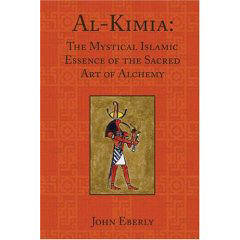 Al-Kimia: The Mystical Islamic Essence of the Sacred Art of Alchemy by John Eberly
Al-Kimia: The Mystical Islamic Essence of the Sacred Art of Alchemy by John Eberly
ISBN 0900588489. Pbk. Sophia Perennis, 2004. 122 pp. $18.95
<< To order this book online, click on bookcover.
Most people have distorted views, and little appreciation, of history. As a contribution toward remedying that condition, John Eberly excavates the extravagant beauty of the Art which forms a foundation for spiritual aspiration and technique world round.
In his elegant introduction, Eberly explains that “al-Kimia accelerates the natural evolutionary process in order to accomplish, insh’Allah, the spirtualization of matter and the materialization of the Holy Spirit.”
The primal teacher, Tehuti (Thoth-Hermes, identified with the Qu’ranic prophet Idres), is the Ibis-headed scribe. It is therefore important, Eberly observes, to attend carefully to the unique relationship in this practice between personality and text. Needless to say, the sacred texts of the “people of the book” are the primary sources for instruction in spiritual transmutation.
In studying the Holy Qu’ran, Jafar as-Sadiq, who had more than 4000 students, developed a complex method for interpreting “layered meanings of key verses that disclose prophecy and revelation through the numerical value assigned to the letters of the alphabet.” Obviously, what can be explicated by Jafar’s technique must first have been enfolded into the text. The study of scripture alchemically transforms the student.
After providing the context for his study, Eberly proceeds to paint illuminating portraits of significant alchemical adepts, all of whom were prominent within the Islamic world. He then considers their relationship to various sects and traditions including orthodox Sunis, Shi’ites, Ismailis, Sufis, and the Malamatiyya (the Blameworthy). Jafar, for instance, the sixth Alid Imam and author of many alchemical treatises, appears as a central figure in Shi’a, Sufi, and Ismaili initiatory chains.
In the second half of his study, Eberly concentrates on ibn Arabi’s teacher, Abu Madyan, and explores various applications of the Sacred Art. He adds a personal account of an alchemical operation for the production of tincture, including a concluding section for those who are able to take “by art …the work a next step into the most basic and primitive alchemical transformation.” This process, by which the al-Aksir (elixir) is formed, “depends upon the human as intermediary between the spiritual and material planes.”
This presentation of an actual operation adds appreciably to Eberly’s historical analysis. Writers about alchemy tend to use language derived from ancient tradition, instructing the reader in transforming base substance, of self and world, to higher and finer states. But one seldom has the opportunity to read through the details which a practicing alchemist experiences, in this case starting with the vegetable kingdom.
Early on Eberly had explained that his work is not simply a “hagiography of Islamic alchemists.” In traditional alchemical fashion, “it follows the famous maxim: Solve et coagula, et habebis magisterium (Dissolve and bind, and you will have the masterpiece).” In order to achieve real understanding, the essence of the parts must be recombined in the “crucible of Unity” and projected on “the reader’s prima materia.”
As Eberly says, “This work is about experiencing the world through a body of flesh mingled with spirit in which the drama of experience exists most palpably in the heart and not foremost in the mind.”
Eberly does not directly address the contemporary geo-political problems resulting from the artificial borders drawn by the retreating colonial powers and the patterns imposed on the native populations by the Western Allies following World War II, or by America’s imperial projects. His book does, however, contribute to appreciation of the brilliant and multidimensional mosaic formed by the followers of Muhammad. And it shows how great spiritual teachers, although embedded in specific lineages, transcend sectarian alliances.
Today it is critical that all people become better informed about the rich and splendid diversity of culture in the Middle East. Eberly’s work familiarizes us with many denominations and initiatory chains within the Islamic world, a deeper appreciation of which facilitates tolerance, understanding, and collaboration while decreasing the tendency to prejudice and violence.
Having reviewed the lives of many outstanding Islamic alchemists, Eberly considers the historical development of mainstream Shi’ism following Jafar’s death, the Seven Imam Lineage (Ismailis), Twelve Imam Lineage (Twelvers, who await the return of the Hidden Imam at the End of Time), and the Malamatiyya (who voluntarily become Worthy of Blame). He gives many examples of the dangers of limited judgement and self-righteousness.
Consider Fakhruddin ‘Iraqi, for instance, who produced one of the most exquisite commentaries on Ibn ‘Arabi’s doctrine of Love. This great poet-scholar had initially been associated with wondering qalandars, a“group of outsiders who” disregarded social norms and incurred the wrath of the orthodox community.
Referring to Muhammad’s statement — “Indeed, I repent a hundred times a day” — Eberly suggests that, as in the case with alchemical processes, those who are “blameworthy, may indeed be considered some of the ‘hidden’ caretakers of the faith.” In Sufism, Shi’ism (including Ismailism), and al-Kimia, he concludes, distinctions between inner and outer are meaningless. Dualism fades into absolute Unity.
Emphasizing the ultimate realization of strict monotheism, which recognizes God’s will is all inclusive, Eberly suggests that one must ultimately “repent of repentance and surrender to a (non)conceptualization of the ultimate Unity of Being, the wahdat al-wujud of Ibn ‘Arabi.”
Rumi said, “We have become gold and are delivered from the theory and practice of alchemy: we are God’s freemen.”
Al-Kimia: The Mystical Islamic Essence of the Sacred Art of Alchemy is written with such graceful movement that reading it is an easy ride in a good raft down a beautiful, exotic stream. One realizes this is original nourishment, a pleasing feast through the eyes, into the heart.
Jay Bremyer is widely respected modern hermeticist. His most recent books are The Chymical Cook: A True Account of Mystical Initiation in the Georgia Woods (published by Barrytown/Station Hill), and The Dance of Created Lights: A Sufi Tale (published by New Falcon), both of which are available from the Crucible Catalog.
Among medieval alchemists, Bacon is especially interesting because he has sometimes also been viewed as a heroic fixture of medieval physical science and mathematical reasoning. “His greatest title to fame,” says George Sarton in his monumental Introduction of the History of Science, “was his vindication of the experimental spirit”
Announcements
- Alchemist’s Tale. I’ve been studying Alchemy for a while and been a member of and regular visitor of your site ever since. Basically I’ve started a Role Play forum on which I have a board for an Alchemist’s tale, and to have others as interested in alchemy as I am posting on there, helping with their knowledge and well keyed imaginations would be a totally wonderful thing to me. If there is any chance of spreading the word about it through any mediums available to to, I would deeply appreciate the support. The site is at http://refti.proboards43.com/. Mel – [email protected]
- Writers Wanted! The Alchemy Journal is looking for articles on any aspect of alchemy, including biographies, historical material, practical laboratory work, spagyric recipes, philosophical pieces, poetry, experiences in personal transformation, spiritual insights, Hermeticism, Gnosticism, book reviews, film and video reviews, website reviews, artwork, etc. Please submit your material or queries via email to [email protected].
Send your announcements to the Alchemy Journal.
Feedback from Our Readers
Howdy! Yeah, I’m from Texas. I am interested in the symbolism of esoteric knowledge dating back to the Egyptians and your journal is a most excellent resource. I am looking at how to most represent these ideas so that include enough diversity in images from Rosicrucians to Hellenistic discovery in symbolism for everyone to find the intuitive appeal in esoteric drawings. – David Piper – [email protected]
Send your comments to Alchemy Journal.
EDITORIAL
From the Editor (by Duane Saari)
“I never thought the Philosopher’s Stone actually existed! To tell you the truth, I thought it was a metaphor. I just wanted to share that.”
This was an email message that I received from an “Alchemy Journal” reader who I will call R. He was responding to the article by Rubellus Petrinus, “The Philosopher’s Stone” in the spring issue of the Journal. The subject of the email was: Wow! And R signed it with his name and the parenthetical description of himself as (futer alchemist). Touched by the incredulity of his reaction, I sent the following response:
I appreciate your reply to our latest “Alchemy Journal” issue, R.
Your previous belief that the Philosopher’s Stone was simply a metaphor is one that is still held by many people. This almost universal belief was encouraged by alchemists and non-alchemists alike. Practitioners of the Art spoke of the Stone with parables and metaphors to share some of their secrets and invite those “with eyes to see and ears to hear” to be apprentices in their laboratories. Well intentioned writers like Jung spoke of alchemical archetypes rather than the Vegetable and Mineral Stones that can heal and transmute metals. Both the archetypes and the Stones are real.
As you explore alchemy, keep an open mind about the Stone, R. You have taken the first step in understanding what the Stone represents. Always remember one of the fundamental alchemical principles – As Above, So Below; As Below, So Above. The Stone exists outside of you and within you. Discovering it in both places is what becoming an Alchemist is all about.
As time has passed, I realize that R’s reaction and his message deserve a more detailed response because they capture the essence of how most people respond today when they learn something about alchemy.
I like what Bruce Moran had to say in the Introduction of his book: Distilling Knowledge: Alchemy, Chemistry and the Scientific Revolution, published just a few months ago. In Moran’s review of the history of the Scientific Revolution in the 16th and 17th centuries, he gives us some insight into the influential, Oxford educated, English scholar, Roger Bacon and our current view of alchemy:
Among medieval alchemists, Bacon is especially interesting because he has sometimes also been viewed as a heroic fixture of medieval physical science and mathematical reasoning. “His greatest title to fame,” says George Sarton in his monumental Introduction of the History of Science, “was his vindication of the experimental spirit” (Sarton, 1927-1948, vol. 2:953). Those who have focused on Bacon’s writings have concentrated a great deal on what he called “efficient causality,” in other words, the question of how actions or “species” (mechanical forces, light, and unseen influences generally) are transmitted over distances.
Yet Bacon saw in alchemy a utility “greater than all the preceding sciences” and in one of his texts he notes that alchemy “treats the generation of things from their elements…Wherefore, through ignorance of this science, neither can natural philosophy…be known, nor the theory, and therefore neither the practice, of medicine.” As we shall also see later, people make the most amazing claims about alchemy, especially when they want it to be something else. In this regard, Bacon’s alchemy gets acknowledged, but for all the wrong reasons. It was alchemy, not chemistry, that Bacon had in view, and which he believed could teach the preparation of useful things, including the preparation of the Philosopher’s Stone.
Does the Philosopher’s Stone really exist? Yes, R, there is a Philosopher’s Stone. And, you may ask: How does one find it? Moran gives us a significant clue: “…alchemy was never something that people believed in; it was something that people did.”
It is my hope that the Alchemy Journal and the contributions by its authors show us how to do alchemy.
Submit your articles on any aspect of alchemy. We are looking for biographies, historical articles, practical laboratory work, spagyric recipes, philosophical pieces, experiences in personal transformation, spiritual insights, Hermeticism, Gnosticism, book reviews, film and video reviews, website reviews, artwork, etc. Please submit your material or queries via email to [email protected].
Subscriptions and Archives
The Alchemy Journal is published quarterly at the annual solstices and equinoxes. Issues are posted at the Alchemy Lab website on the journal archives page at www.AlchemyLab.com/journal.htm. This page also contains a Directory of Past Issues and an Index of Articles. To subscribe to the journal, simply send a blank email to [email protected].
Alchemy Resources
-
Alchemergy (Modern Alchemy) www.Alchemergy.com
-
Alchemy Guild (Membership Organization) www.AlchemyGuild.org
-
Alchemy Lab (Alchemy Articles, Files, and Gallery) www.AlchemyLab.com
-
Alchemy Website (Original Alchemy Texts) www.levity.com/alchemy/
-
Crucible Catalog (Books, Tapes, Labware, Tinctures, Herbs) www.Crucible.org
